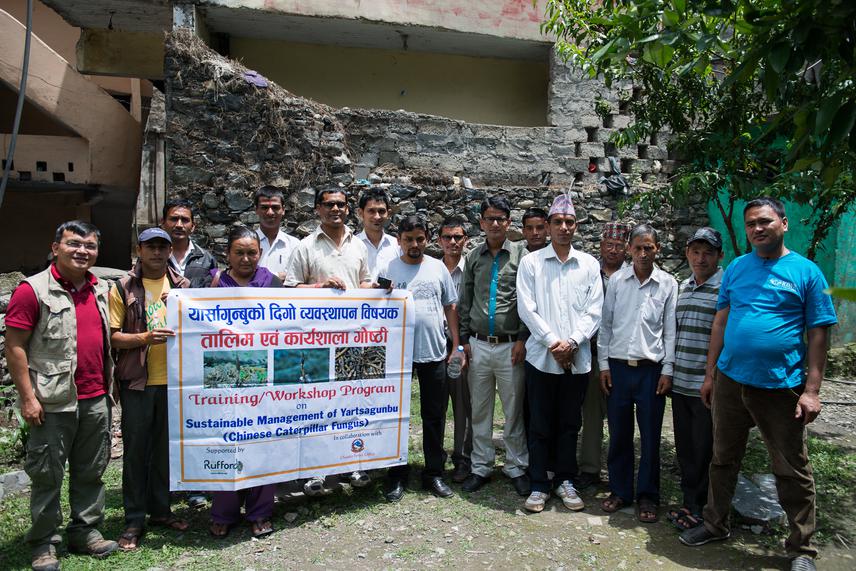Uttam Babu Shrestha
Other projects
23 Feb 2011
Sustaining Caterpillar Fungus, Cordyceps (Ophiocordyceps sinensis) for Mountain Life: A study of Ecology, Economics and Ethnobiology of Cordyceps in the Himalayas
6 Feb 2015
Tragedy to Triumph: Understanding the Role of Community Institutions for Sustainable Management of Chinese Caterpillar Fungus
This study aims to model and map the potential habitat of caterpillar fungus. It will project the potential impacts of future climate change on the distribution of the species.

Our recent study supported by RSGs showed that along with soaring market value of caterpillar fungus (Ophiocordyceps sinensis) at international market, the number of harvesters and intensity of the harvest have been increasing at local level. Local harvesters of Dolpa, Nepal perceived a significant decline in natural population of caterpillar fungus; the average per capita harvest dropped by around half between 2006 and 2010. Although I have documented the natural history and ecology of caterpillar fungus, determined microclimatic conditions of the caterpillar fungus habitat, assessed harvesting and trading patterns and quantified the contribution of caterpillar fungus to household economy; the finer scale potential distribution of this species is yet unknown.
Using the innovative technologies (Global positioning system technology, Geographic Information Systems, Remote Sensing) and statistical methods (Generalized linear model, General additive model, Multivariate statistics), geographical distribution of the potential habitat of a species can be modelled and mapped at landscape level. Such distribution maps generated with the help of environmental variables and geographic locations of the species provide robust and reliable predictions of species geographic and ecological distribution which are critical for conservation planning. Furthermore, species distribution modelling can be or has been used to project potential impacts of future climate change on species distribution.
The proposed research will establish a link between bioclimatic factors and the occurrence of caterpillar fungus, produce a finer scale distribution map of caterpillar fungus habitat in Nepal, determine the gaps and representativeness of caterpillar fungus habitat in current protected area system of Nepal, project the potential impacts of future climate change on the distribution of caterpillar fungus. Besides species distribution modelling, this study will continue the socio-economic survey, ecological study, and observation of governance regimes in other new study areas in order to generate and enrich multidisciplinary knowledge for meaningful conservation intervention and sustainable management of caterpillar fungus.